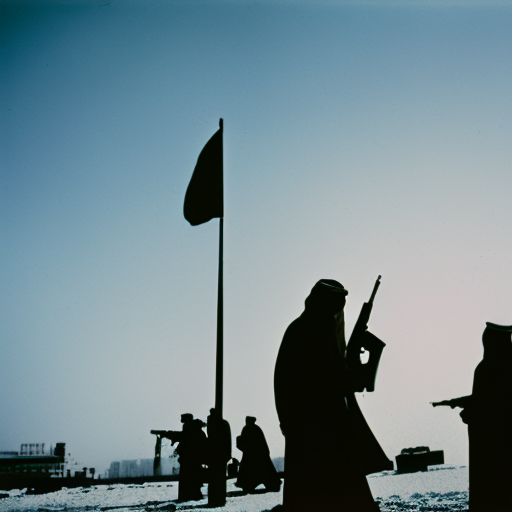Summary:
The Arab Cold War was a period of intense rivalry and conflict between two factions of the Arab world, led by Egypt and Saudi Arabia, respectively. The conflict emerged in the 1950s and lasted until the late 1970s, with both sides vying for regional dominance and influence. The Arab Cold War had significant implications for the Middle East, shaping regional politics and fueling proxy wars.
Background:
The Arab Cold War can be traced back to the rise of two prominent leaders in the Arab world: Gamal Abdel Nasser of Egypt and King Faisal of Saudi Arabia. Nasser, a charismatic nationalist, sought to unite the Arab world under his leadership and championed the cause of pan-Arabism. Faisal, on the other hand, represented conservative monarchies and sought to counter Nasser’s influence.
Causes:
The Arab Cold War had several causes, including ideological differences, regional power struggles, and the desire for leadership within the Arab world. Nasser’s pan-Arabism and his support for revolutionary movements, such as the Algerian National Liberation Front, threatened the conservative monarchies in the region. Saudi Arabia, backed by other Gulf states, feared the spread of Nasser’s influence and sought to counter his revolutionary agenda.
Main Events:
The Arab Cold War was marked by a series of events that heightened tensions between the two factions. In 1956, Nasser nationalized the Suez Canal, angering Western powers and leading to a military intervention by Britain, France, and Israel. While Saudi Arabia condemned the invasion, Nasser emerged as a hero in the Arab world for standing up to Western imperialism.
In 1962, a civil war broke out in Yemen between royalists supported by Saudi Arabia and republicans backed by Egypt. The conflict, known as the North Yemen Civil War, became a proxy war between the two sides, with Egypt providing military support to the republicans and Saudi Arabia aiding the royalists. The war lasted until 1970 and further deepened the divide between Egypt and Saudi Arabia.
Another significant event was the 1967 Six-Day War between Israel and several Arab states, including Egypt. The humiliating defeat of the Arab forces led to a loss of confidence in Nasser’s leadership and further eroded his influence in the region. Saudi Arabia, meanwhile, emerged as a key player in the Arab world, providing financial and military support to other Arab states.
Consequences:
The Arab Cold War had far-reaching consequences for the Middle East. It deepened divisions within the Arab world and weakened the prospects of pan-Arab unity. The conflict also fueled proxy wars in the region, with various countries supporting opposing sides in conflicts such as the Lebanese Civil War and the Palestinian-Israeli conflict.
The Arab Cold War also had economic implications. Saudi Arabia, with its vast oil reserves, used its wealth to gain influence and support its allies. Meanwhile, Egypt, under Nasser’s leadership, pursued socialist policies that strained its economy and limited its ability to compete with Saudi Arabia.
The conflict finally began to thaw in the late 1970s with the signing of the Camp David Accords between Egypt and Israel. This marked a shift in regional dynamics and led to Egypt’s isolation from other Arab states. The Arab Cold War gradually faded as new challenges emerged in the region, such as the Iran-Iraq War and the rise of Islamic extremism.
Conclusion:
The Arab Cold War was a period of intense rivalry and conflict between Egypt and Saudi Arabia, with both sides vying for regional dominance and influence. The conflict had significant implications for the Middle East, shaping regional politics and fueling proxy wars. It deepened divisions within the Arab world and weakened the prospects of pan-Arab unity. The conflict finally began to thaw in the late 1970s, paving the way for new challenges and dynamics in the region.












